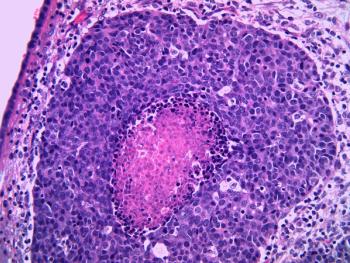
New Test Shows Promise in Accuracy of Food Allergy Diagnostics
Key Takeaways
- Peanut allergies affect 4.6 million U.S. adults, with a significant rise in prevalence over recent decades.
- Traditional allergy tests often result in misdiagnoses, leading to unnecessary food avoidance.
The gold standard of testing for food allergies is an oral food challenge test where patients consume the allergen, such as peanut extract, under supervision.
Approximately 4.6 million United States adults are allergic to peanuts, according to a study in Food Allergy and Gastrointestinal Disease in 2021. Of these individuals, approximately 800,000 developed an allergy after age 18. The prevalence of food allergies, including peanut allergies, have been rising, and the prevalence of food allergies are up by 50% between 1997 and 2011 and again between 2007 and 2021. Peanut allergies have risen from less than 1% in 1999 to approximately 3% from 2015 to 2016, according to Food Allergy Research and Education.1,2
The gold standard of testing for food allergies is an oral food challenge test where patients consume the allergen, such as peanut extract, under supervision. Allergen skin prick tests and blood tests have shown inaccuracy, leading to misdiagnoses and unnecessary food avoidance. In a 2022 study, investigators have developed an alternative to the test, which mimics an allergic reaction in a test tube. Recently, the investigators had now tested the effectiveness of the test on samples from children and adolescents with confirmed peanut allergy and healthy individuals.3
"Comparison with other clinical tests was crucial to determine which of them reflected the patients' allergic reaction best. The new mast cell activation test has the advantage that it is functional and therefore incorporates many parameters that are important for triggering the allergy," Thomas Kaufmann from the Institute of Pharmacology at the University of Bern, said in a news release. "The new test is also based on stable blood serum, which can be drawn using simple blood sampling and then stored in the freezer. This eliminates the challenging logistical obstacles that arise with other methods."3
In the study published in the European Journal for Allergy and Clinical Immunology (Allergy), investigators found that the test showed higher diagnostic accuracy than current methods used.3 With new, accurate diagnostics, providers can prescribe the best medication earlier, without misdiagnosis or unnecessary food avoidance. Pharmacists play an essential role in education of food allergies for patients.
Investigators included sera from 96 individuals who were enrolled in the MONA study and had clear clinical data on their peanut allergy status. There were 69 individuals who had a peanut allergy and 27 who were non allergenic controls. The results showed that Hoxb8 mast cell activation test (Hoxb8 MAT), the diagnostic test, showed a robust display of dose-dependent activation, with a cutoff value of ≤5.2% CD107a positive cells, according to the study investigators.4
Investigators reported that the diagnostic accuracy was highest for allergen concentrations of ≥100 ng/mL, with an area under the receiver operating characteristic curve of 0.97. Additionally, the sensitivity was 93%, and specificity was 96%.4
"In the Hoxb8 mast cell activation test (Hoxb8 MAT), which we developed, mast cells grown in the laboratory are brought into contact with blood serum from allergic patients. The mast cells bind the [immunoglobin E] antibodies from the serum and are sensitized by them. We can then stimulate the mast cells with different amounts of the allergens to be tested," Alexander Eggel, PhD, from the department for biomedical research at the University of Bern, said in a news release.3
REFERENCES
1. Warren C, Lei D, Sicherer S, Schleimer R, Gupta R. Prevalence and characteristics of peanut allergy in US adults. J Allergy Clin Immunol. 2021;147(6):2263-2270.e5. doi:10.1016/j.jaci.2020.11.046
2. Food Allergy Research and Education. Food Allergy Facts and Statistics for the U.S. Updated April 18, 2024. Accessed October 25, 2024. https://www.foodallergy.org/sites/default/files/2024-07/FARE%20Food%20Allergy%20Facts%20and%20Statistics_April2024.pdf
3. New test improves diagnosis of allergies. News release. University of Bern. October 15, 2024. Accessed October 25, 2024. https://www.sciencedaily.com/releases/2024/10/241015141449.htm#google_vignette
4. Bachmeier-Zbären N, Celik A, van Brummelen R, et al. Clinical utility analysis of the Hoxb8 mast cell activation test for the diagnosis of peanut allergy. Allergy. Published online September 28, 2024. doi:10.1111/all.16341
Newsletter
Stay informed on drug updates, treatment guidelines, and pharmacy practice trends—subscribe to Pharmacy Times for weekly clinical insights.


















































































































































































































